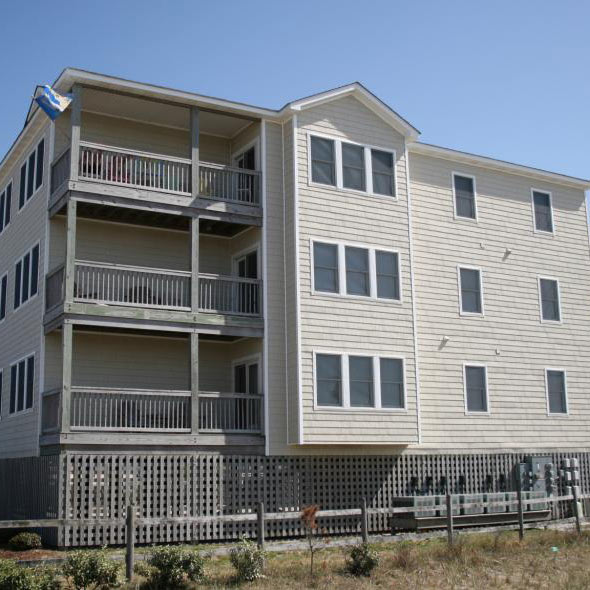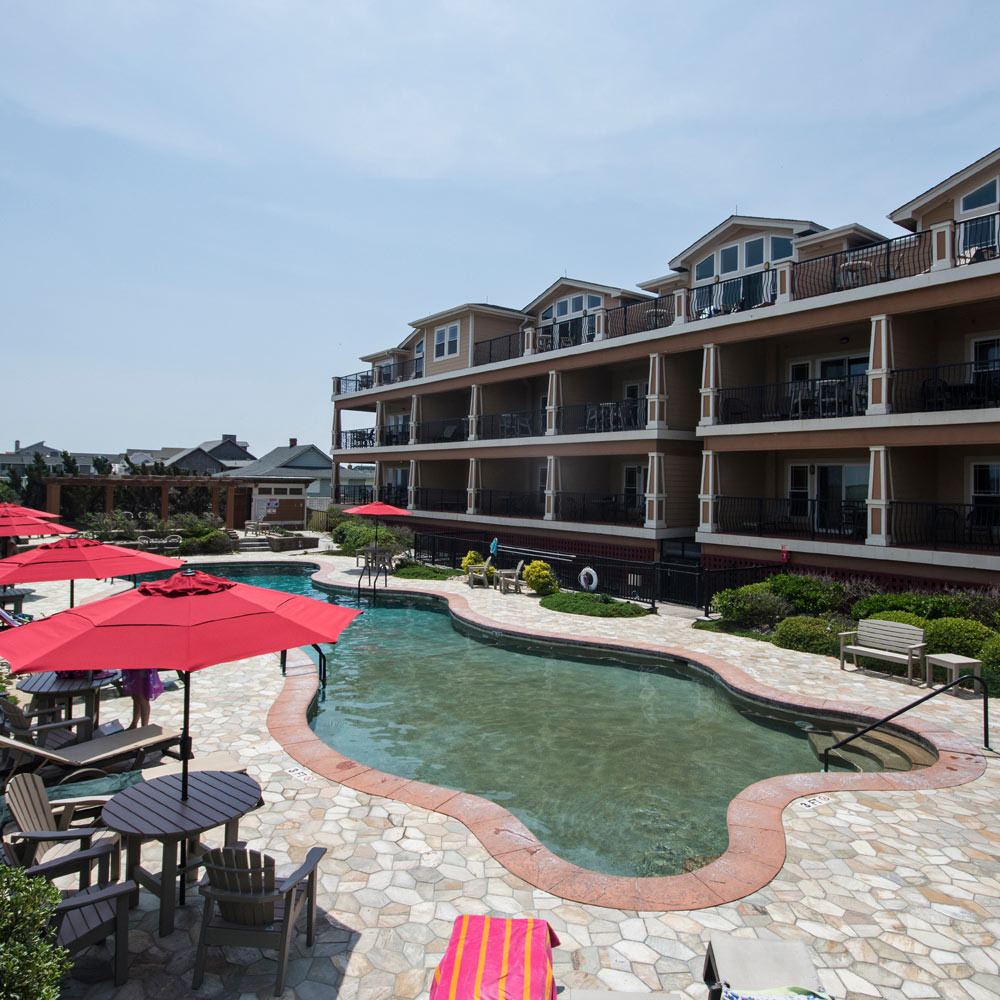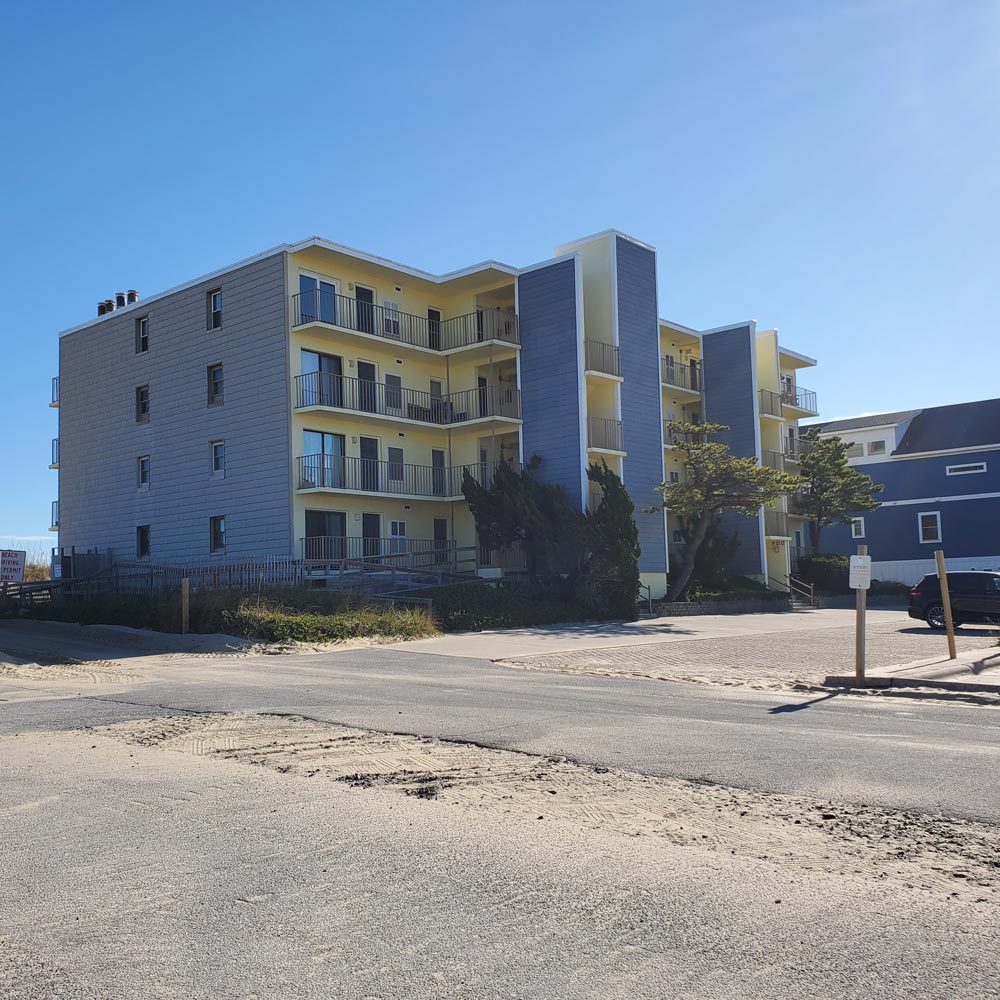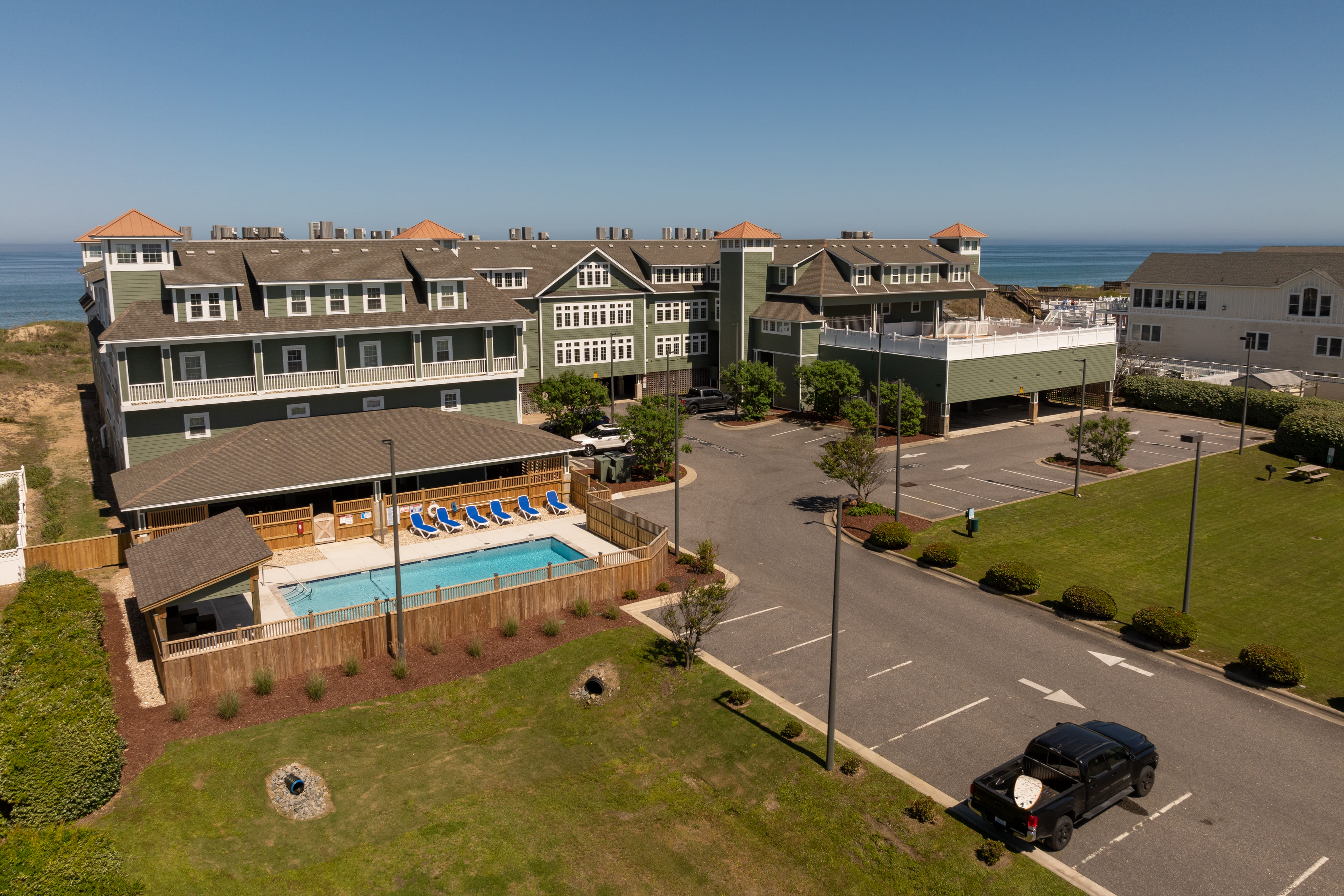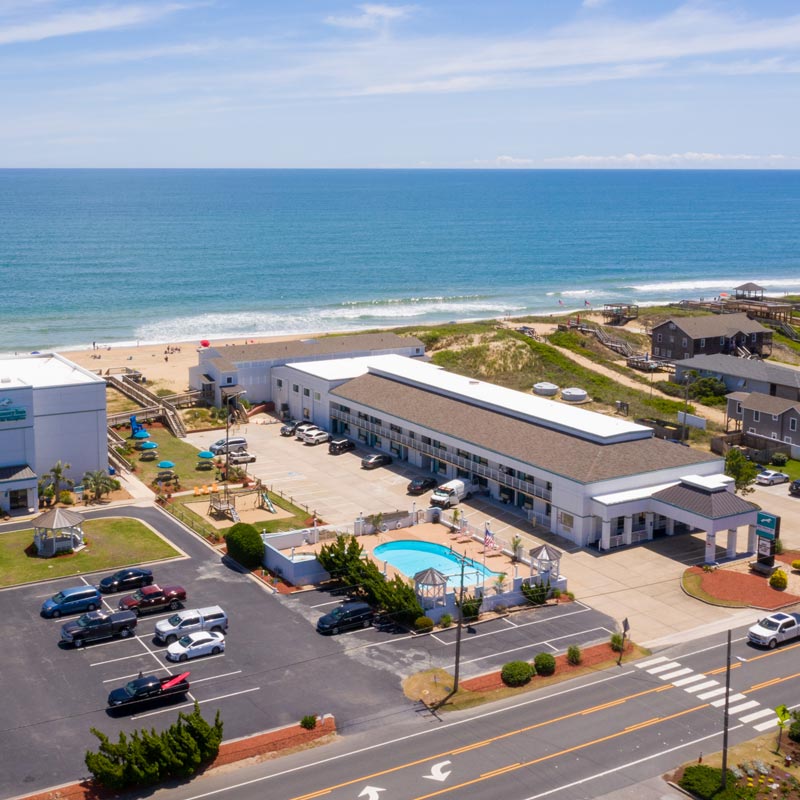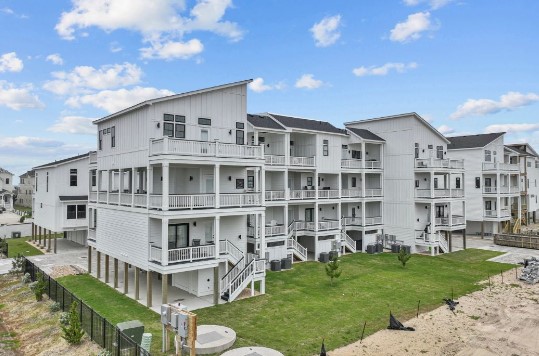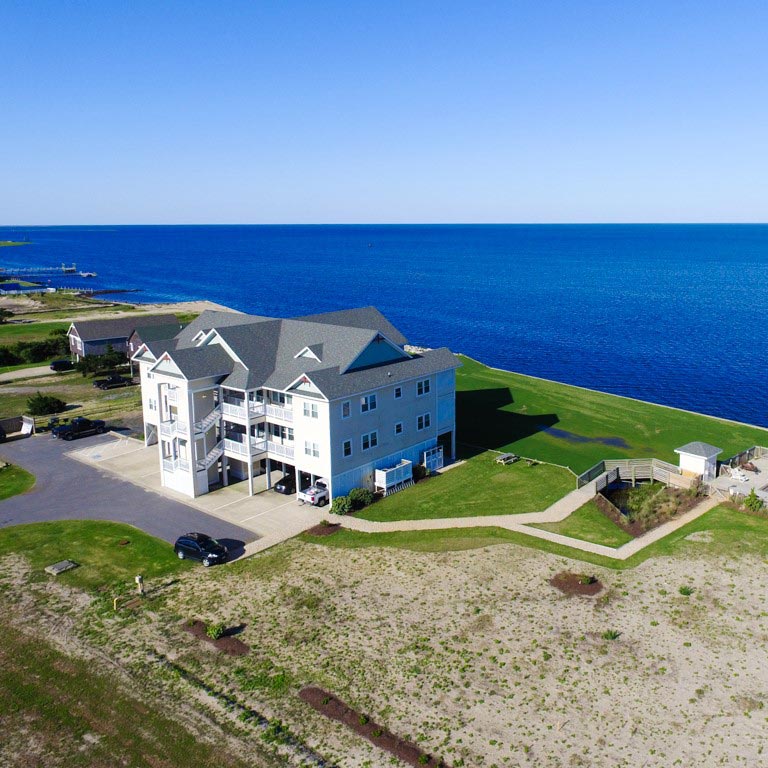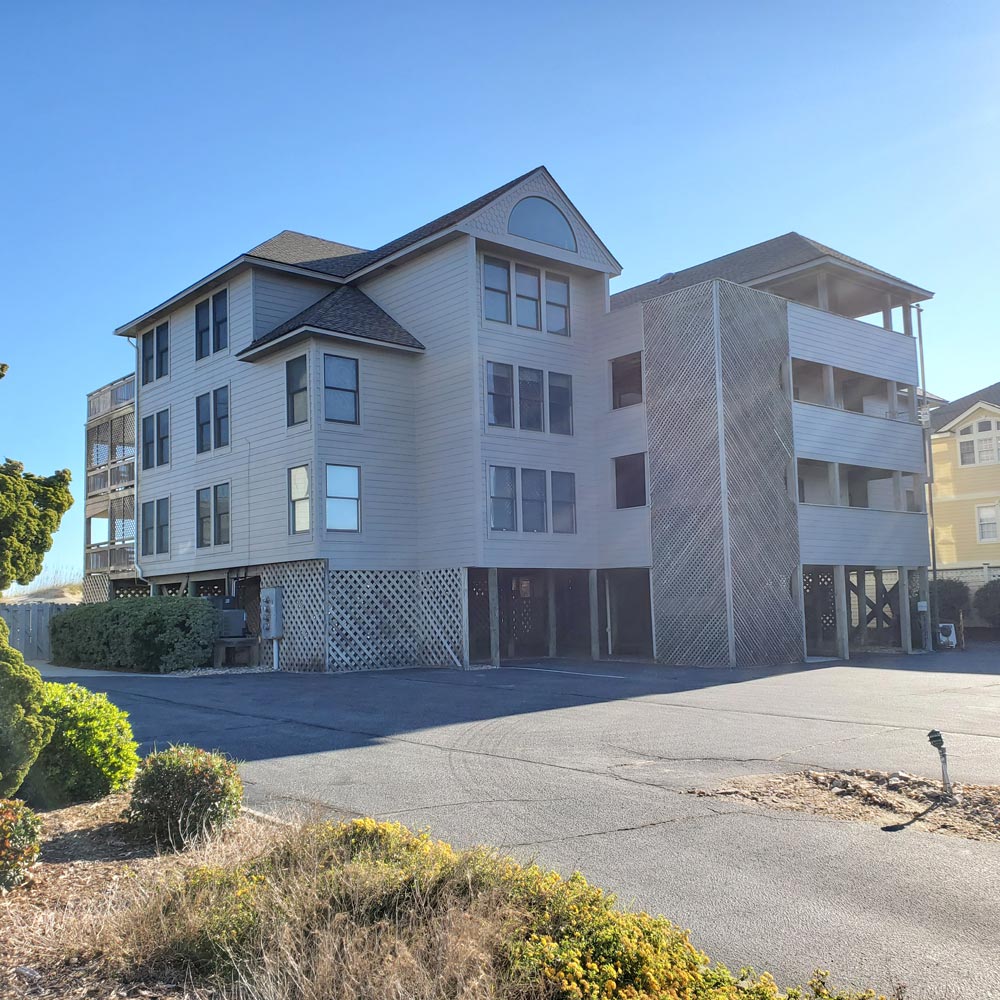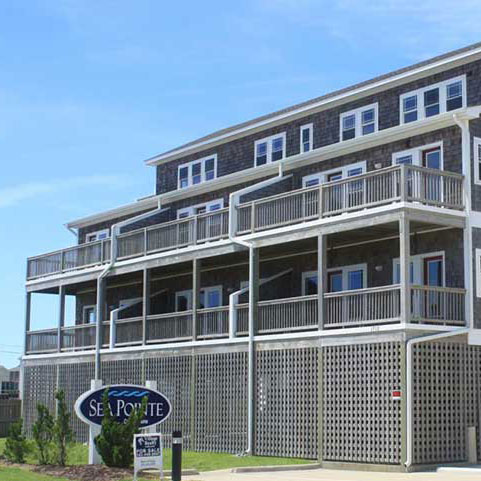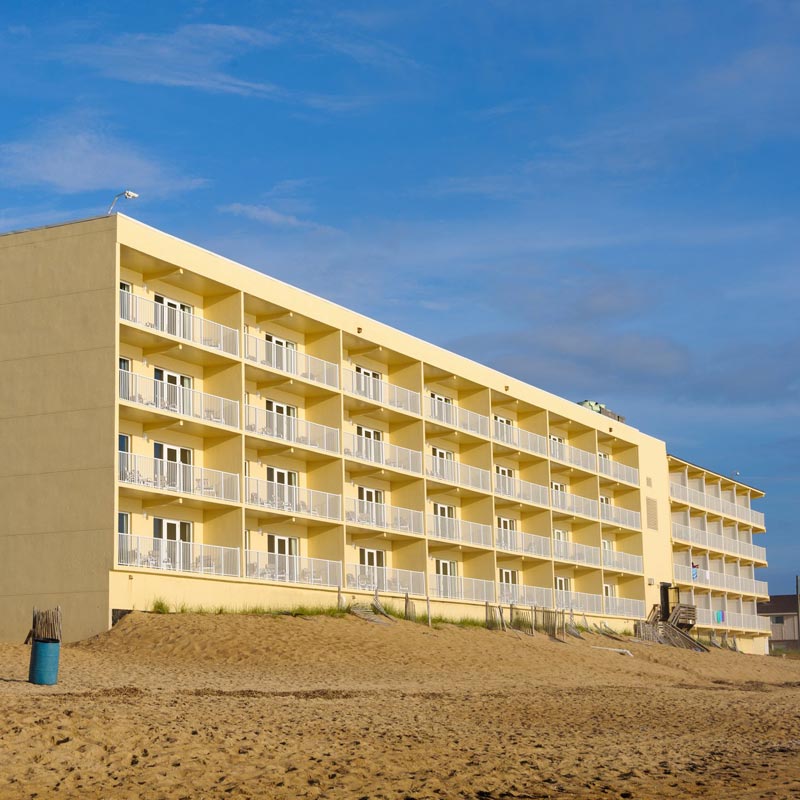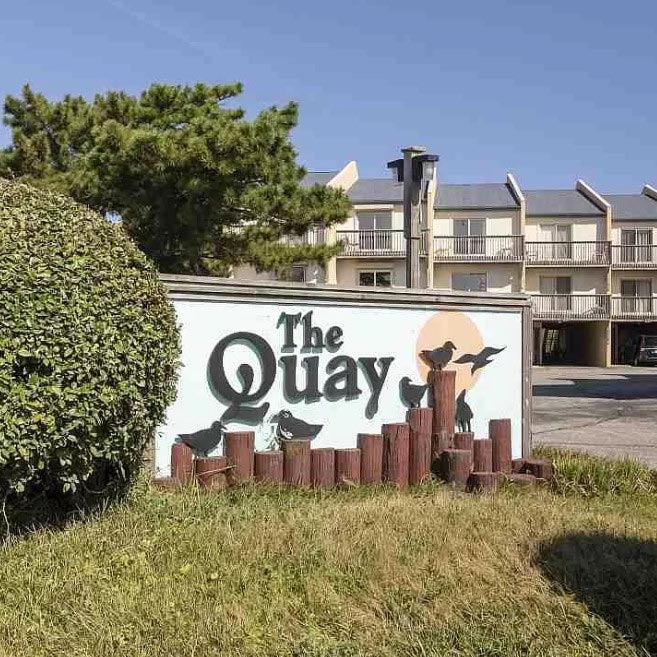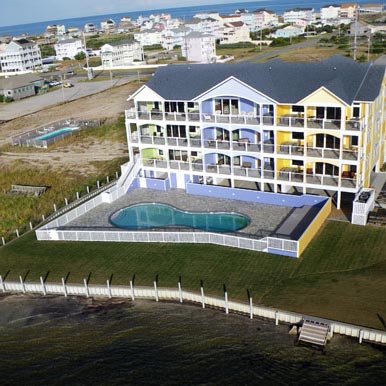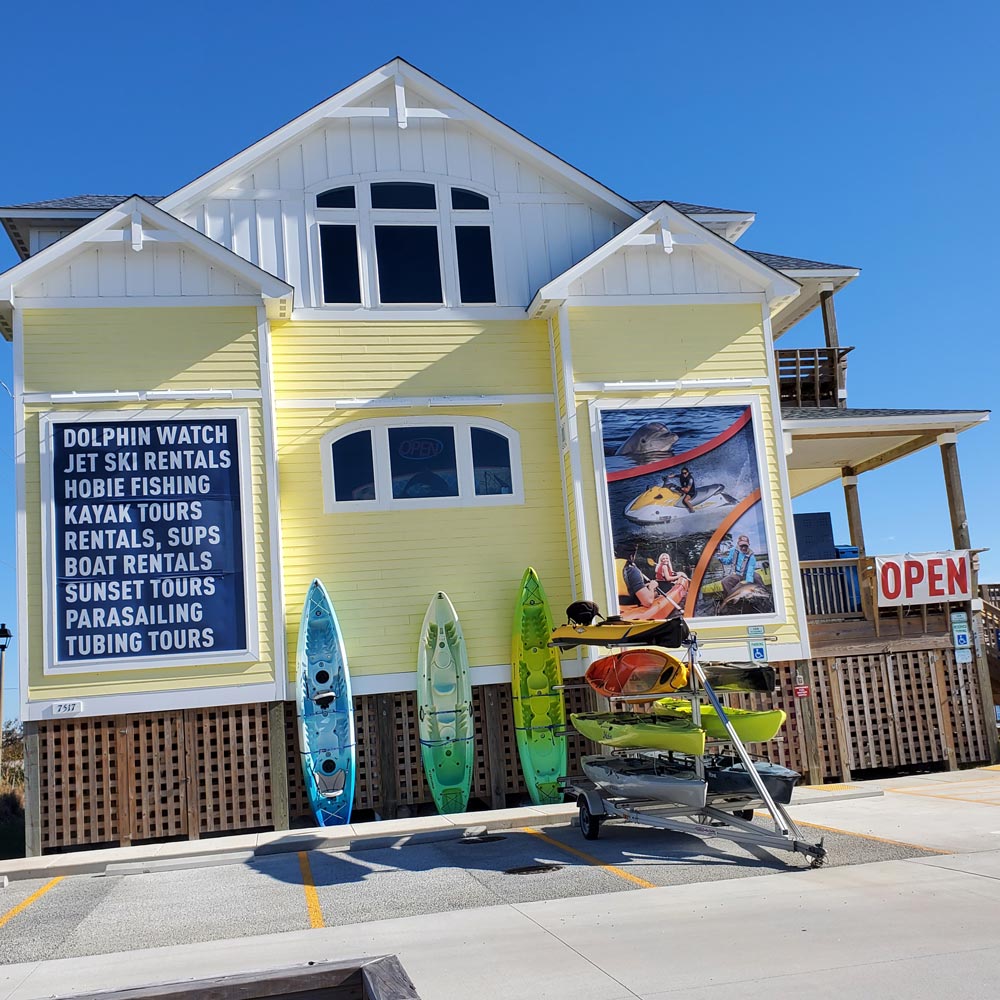Guide To Seeing Outer Banks Wild Horses: Tours, Guides & Locations

There are many things to see and do in the Outer Banks, but a trip to the coastal state of North Carolina is not complete without paying a visit to the Corolla wild horses. The wild horses are arguably the most famous residents of the Outer Banks and, by far, the oldest. They’ve been deemed the state horse of North Carolina which goes to show you the residents’ love for these horses runs deep.
The wild horses living on Corolla today are believed to have arrived in the early 16th century. Recent DNA tests have shown genetic similarities between the wild horses on Corolla and modern-day Colonial Spanish Mustangs, which means they likely arrived on Spanish sailing vessels.
Since their arrival, the wild horses have been happily living on the North Carolina barrier island. While most often they’re found in the northern half of the Outer Banks, it’s possible to see them roaming the southern islands, like Ocracoke Island, all the way down to Cape Lookout National Seashore and Shackleford Banks.
Luckily, thanks to the island maintaining some of its original tranquility, they still call the area home, although their numbers are in decline. If you want to see the wild horses, it’s an easy hour-long drive from the majority of our condo rentals.
While that might seem like a long drive to take on your vacation, it’s well worth it since it’s not every day that you get to see these magnificent creatures in the wild! Before you make the drive to go see the wild horses though, here’s a bit of information to help you understand the horses, their history, and how to interact with them.
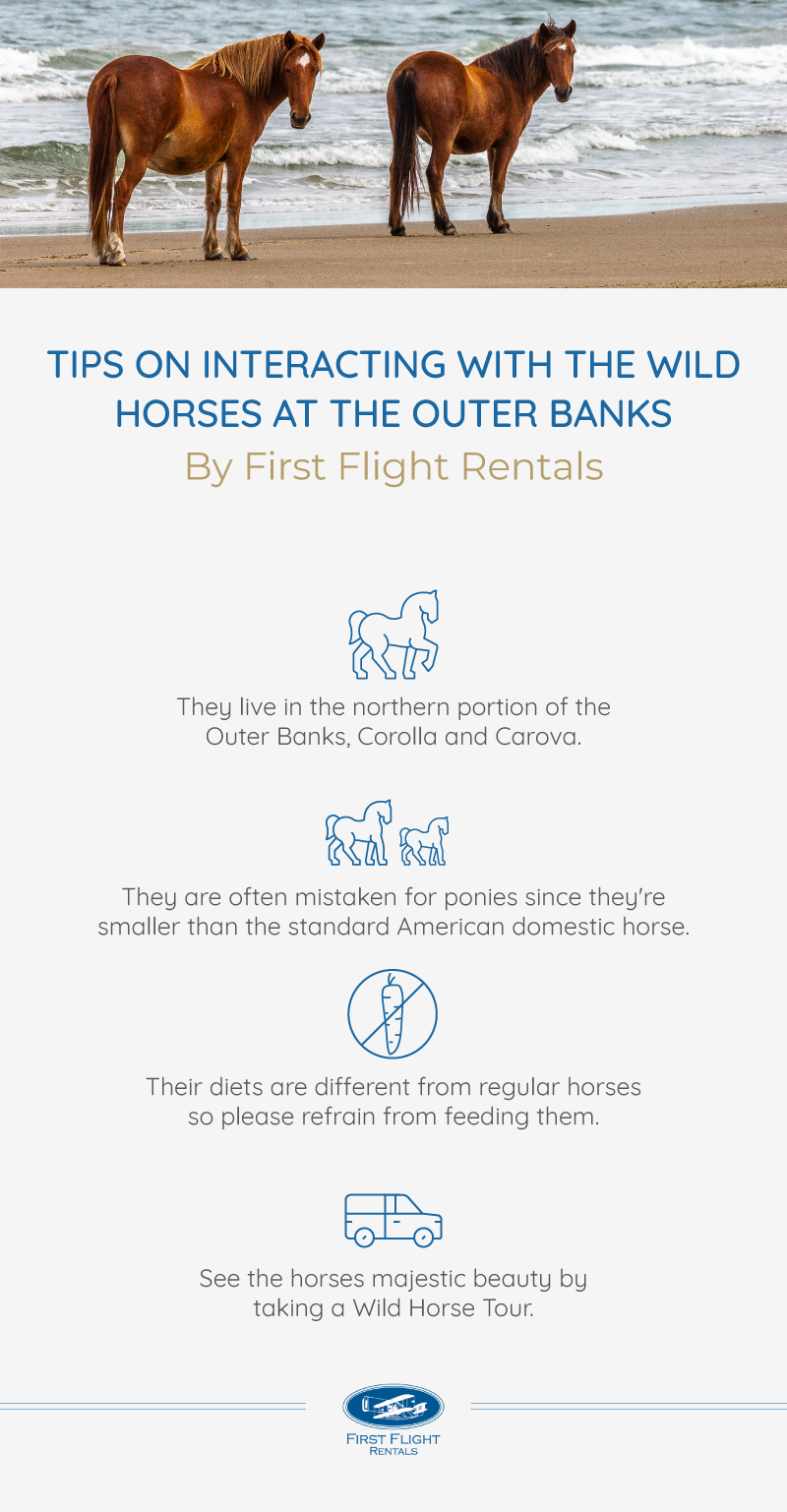
A History Of Outer Banks Wild Horses
With the rise of technology and scientific advances, scientists and researchers have determined that the wild horses on the Outer Banks probably arrived on Spanish sailing ships in the 1520s. They are believed to have come over in stages over the course of several expeditions. The first herd may have arrived on an expedition captained by Spanish explorer Lucas Vasquez de Allyon.
Another popular belief is that the horses arrived by themselves on the island in the aftermath of a shipwreck. During a Spanish expedition, one of their boats began to sink. In an attempt to save the crew and supplies, they rid the boat of extra heavy goods. Yep, you guessed it, the horses! Those horses made it to the mainland where they established their own herd of wild horses whose ancestors still roam the beaches of Corolla to this day.
While it can be hard to ascertain how exactly the horses first arrived to the barrier island, it is widely agreed upon that they’ve called this place home long before we have.
These Wild Colonial Spanish Mustangs were once more widespread along the Outer Banks, with a population size of about 5,000 – 6,000 wild horses reported in the Outer Banks in the mid-1920s. Over the years, the area has become increasingly developed, which has caused the horses’ population size to decline.
Today, there are about 100 horses, adults and foals, living on the northern part of the Outer Banks all under the protection of the National Park Service. The herd size fluctuates slightly from year to year, but the population size has overall remained fairly steady and predictable in recent years. The population size is tracked by a helicopter count, which takes place once each year.
Where to Spot OBX Horses in the Wild
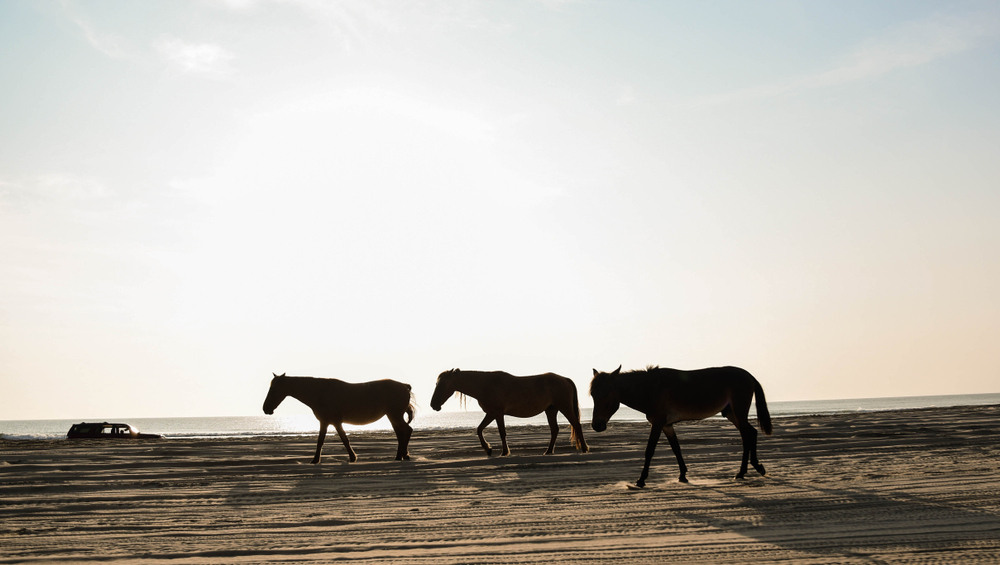
The wild horses live primarily in the northern portion of the Outer Banks, which includes Corolla and Carova Beach. The horses roam the northern portion of Currituck Beach, which is a rural area with little development. Within this heavily wooded area, the horses can roam freely, and it’s not uncommon for them to travel a distance of up to 25 miles in a day.
If you stand and watch the horses for some time, you’ll probably notice that they tend to travel in the same areas and even stick with the same herd. This is because the horses are territorial and prefer to stay in areas that they live and know. Quite often, they might not range far at all from the place where they were born. Blood-related horses generally stick together, although the dominant male in a family may break off and form his own smaller family, which is called a “harem.”
Since the horses live in a remote, rugged area with a lack of paved roads, visitors need to have a vehicle suitable for off-road driving to see them, which means you’ll need a 4WD car. Don’t worry, if you don’t have personal access to a car with this capability, I’ve outlined plenty of great tour companies you can choose from to plan the perfect outing to view these amazing horses.
How Is A Corolla Wild Horse Different From A “Regular” Horse?
Aside from their shaggier coats and manes, which distinguishes them as wild horses, there are actually biological and physical differences between the wild horses on Corolla and the standard American domestic horse.
Corolla horses bear many physical similarities to wild Spanish mustangs. Like their Spanish cousins, the horses on Corolla are shorter. They have five lumbar vertebrae instead of six vertebrae, which is the spinal cord length of modern horses. Due to their small size, many people actually confuse these horses with ponies.
Another distinction lies in the tail. The tails of the wild horses are set much lower than the tails of most domestic species. Their heads are long and narrow in shape, and their ears have pointed tips.
Despite their relatively small stature, the Corolla horses have a narrower body shape than most modern domestic breeds. They have a springy and energetic gait and are known for being intelligent and athletic horses.
What visitors don’t always know is that the wild horses on Corolla are not the same as the wild ponies on Chincoteague and Assateague. This is true for several reasons. For one, the wild horses of Corolla stand at a full-grown height of somewhere between 12 and 14 hands. Like the ponies on the Virginia coast, the Corolla horses are a feral (wild) breed. However, the horses of Corolla have remained predominantly purebred over the years, which means they’ve stayed true to their Spanish bloodline. The breeds that inhabit the Virginia coastline, in contrast, are a collection of assorted breeds.
Can You Feed And Pet The Wild Horses?
Seeing a wild horse in person is an exciting and rare event, and it’s understandable that you want to get close! What is important to remember, however, is that these horses are not the same as you’ll find on a horse farm. The wild animals are just that – wild and feral – which means they’re less predictable than domestic horses. For that reason, it is illegal to get any closer than 50 feet from a wild horse.
The wild horses also have a special diet too, which is actually quite different from domesticated horses. Rather than commercial grain and fortified hay, the wild horses of Corolla subsist on food that’s available in the wild. Their diet includes wild grass, acorns, some flowers, and sea oats. They can actually develop colic, which can be fatal, if they eat foods that you’d normally feed to a domestic horse, including apples and carrots. Therefore, it’s also against the law to feed wild horses.
Although you can’t walk up and pet or feed a wild horse, you are certainly welcome to take photographs of them roaming in the sand dunes to bring memories home.
Outer Banks Wild Horse Tours
While you might stumble upon a wild horse or two on your drive through OBX, the best way to experience the majestic beauty of these creatures is through a guided horse tour, which are readily available along the northern stretch of the islands.
Some of these companies even offer kayak, ATV, and boat tours as well but it’s unanimous on the islands that the best way to see the horses are on jeep tours.
Here are a few top-rated tour providers:
Bob’s Wild Horse Tours
Address: 817 B Ocean Trail, Corolla, NC 27927
Phone: (252) 453-8602
Hours:
Website: https://corollawildhorsetours.com/
Corolla’s original horse tour purveyor does not disappoint! Bob’s offers exciting open-air safari-style jeeps where visitors can take in the beautiful coastal landscape and see native wild horses in their natural habitat.
This particular tour is two hours in length and explores the four-wheel-drive beaches of Corolla. The local guides will also share fun facts and stories about the OBX area and answer any questions you might have about wild horses and more.
Pro Tip: Before booking your vacation, reach out to Bob’s Wild Horse Tours to learn about their seasonal discounts. If you’re booking a trip primarily to see the horses, it might save you some money to visit in the offseason.
Wild Horse Adventure Tours
Address: 610 Currituck Clubhouse Dr, Corolla, NC 27927
Phone: (252) 489-2020
Hours: 7:30 a.m. – 6:15 p.m., Daily
Website: https://wildhorsetour.com/
Wild Horse Adventure Tours boasts some of the best tour reviews on TripAdvisor along the Outer Banks and it’s not hard to figure out why. This boutique tour guide agency features exclusive 13-passenger open-air Hummers that are well-equipped for off-road tours.
Ride in luxury as you take in the surrounding scenery and watch wild horses roam the local beaches. The unique design of the Hummers allows Wild Horse Adventures to access three previously inaccessible areas, including the sacred Wild Horse Sanctuary on Swan Beach.
Corolla Wild Horse Tours
Address: 1210 Ocean Trail, Corolla, NC 27927
Phone: (252) 207-0511
Hours: 8 a.m. – 6:30 p.m., Daily
Website: https://seecorollawildhorses.com/
Known for providing a family-friendly tour experience, Corolla Wild Horse Tours is a must for groups. The tour typically lasts two hours and takes place in a 15-passenger open-air truck, which can easily accommodate car seats, if necessary.
The tours cover 25-miles of off-road cruising along Carova Beach and areas behind the sand dunes into secluded areas where the wild horses graze and roam freely. The knowledgeable tour guides will share wild horse history and answer any and all questions you have along the way.
Local Tips For Viewing Wild Horses
Seeing the horses in person is possible in several ways. Some people prefer to go exploring on their own, which means they rent their own 4WD vehicle and drive out to where the horses live. If you’d like to go this route, I’d suggest checking out Kitty Hawk as their rental prices are typically lower than in Corolla.
Others choose to take a guided tour. Tours are offered on a seasonal basis by the Corolla Wild Horse Fund and Museum.
Tours are also provided by several different private companies. Something to keep in mind is that proceeds from tours offered through the Corolla Wild Horse Fund all go directly to supporting the animals! If you do opt for a guided tour, book your spot in advance as space is limited and they tend to sell out during the busy summer months.
Since the horses are local and call North Carolina’s Outer Banks their home year round, there’s not necessarily a best time of year or time of day to view the horses, which means you don’t have to fret over a specific tour time or seasonality.
Keep in mind that the same laws apply on personal tours and guided tours; it is unlawful to feed a horse or to intentionally come within 50-feet of a wild horse.
—
The wild horses of the Outer Banks are truly a cultural treasure and a popular natural attraction for visitors of all ages. Make it a point to see these equine beauties during your trip to the North Carolina coast!
Posted on 02/16/2022 in Things To Do


